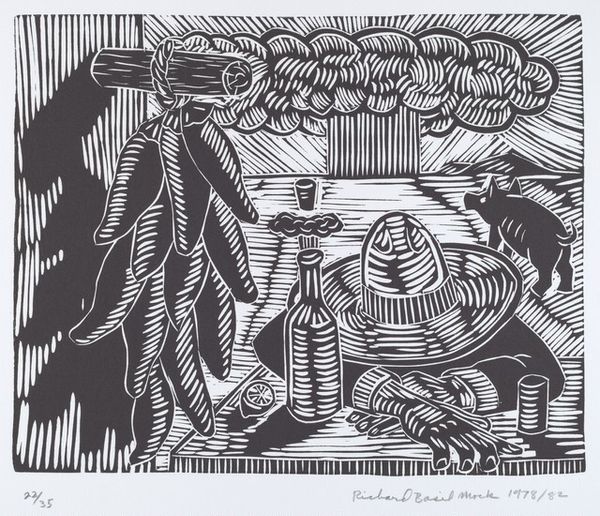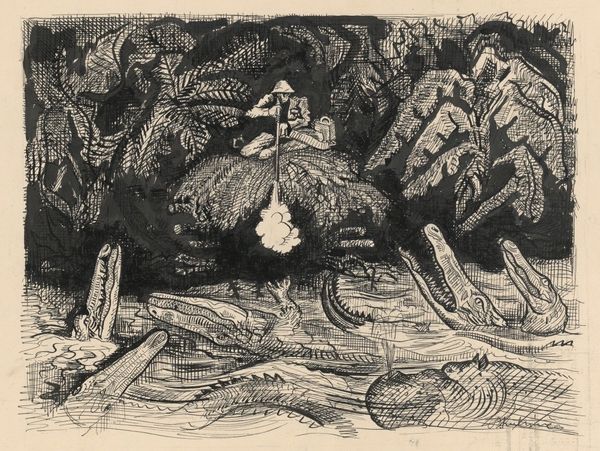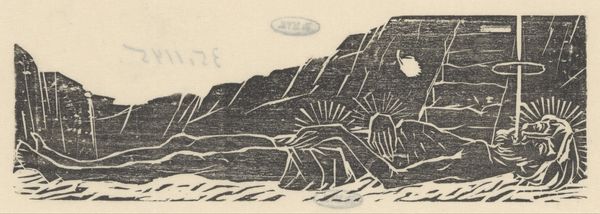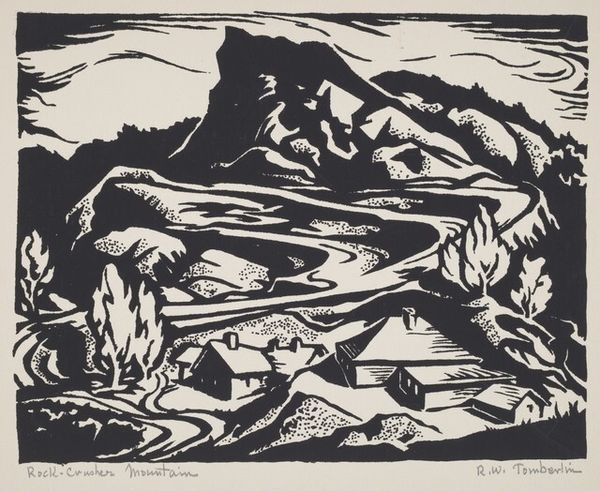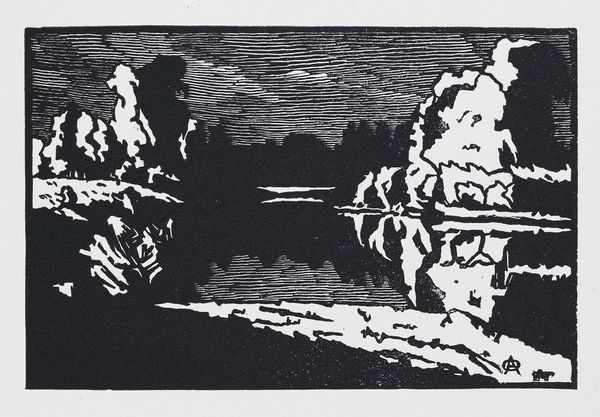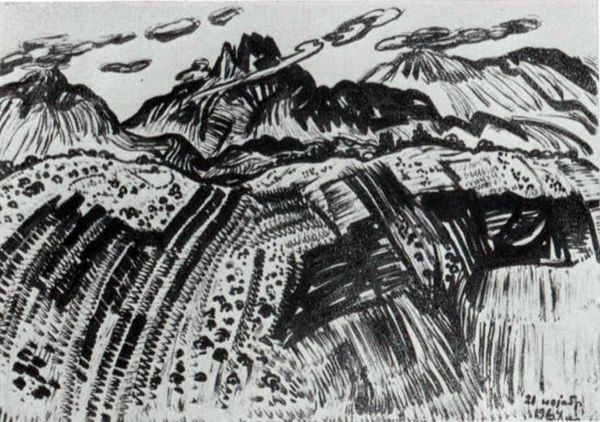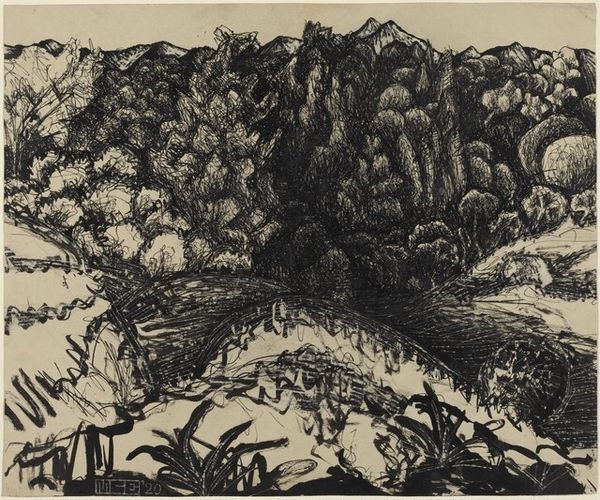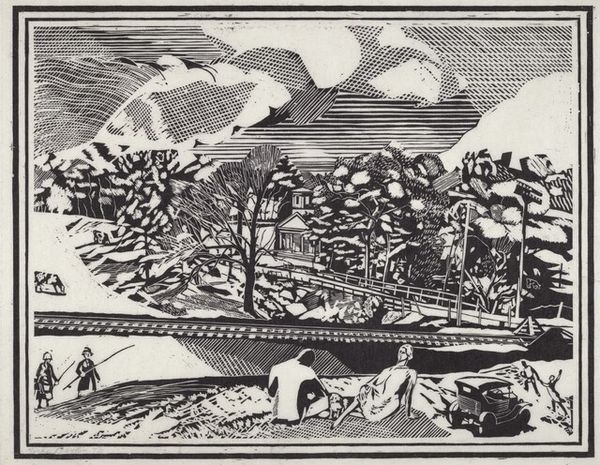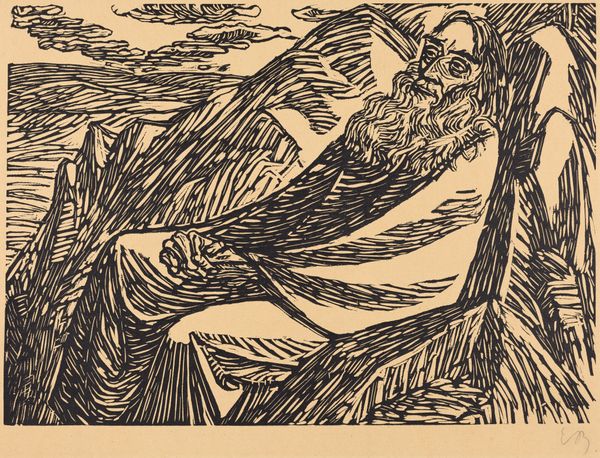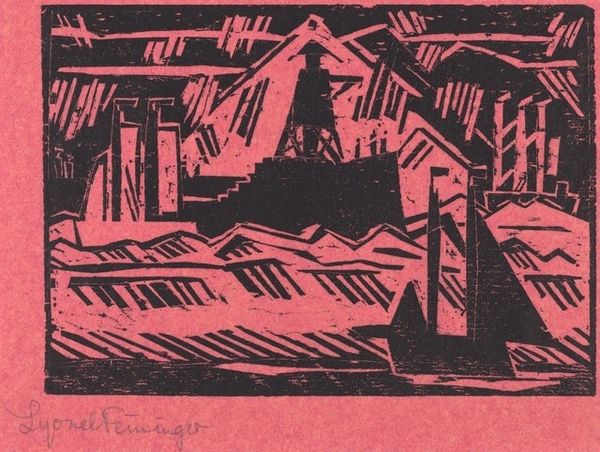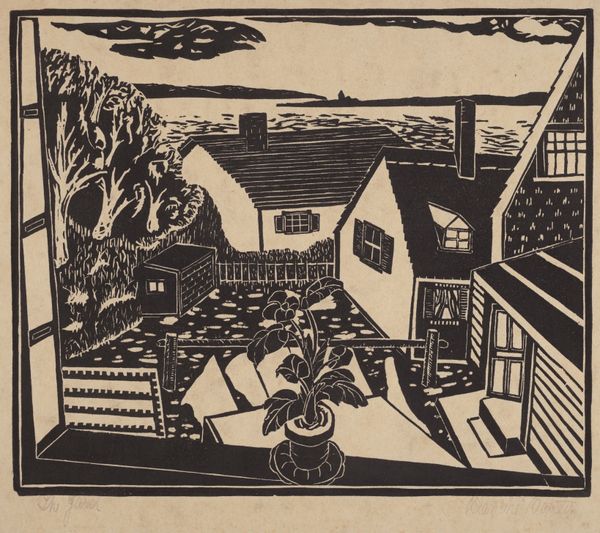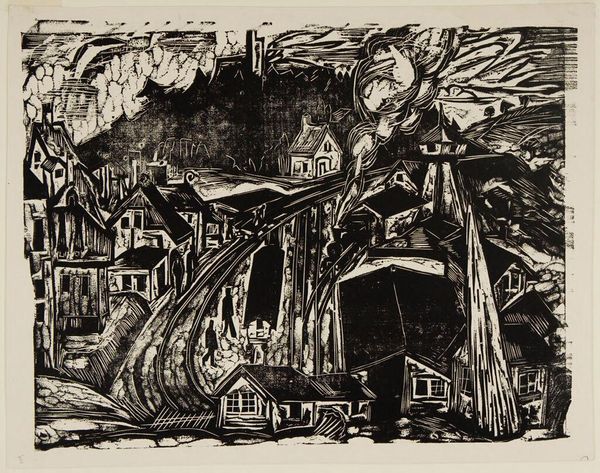
Dimensions: 35.3 x 50 cm
Copyright: Public domain
Curator: Ernst Ludwig Kirchner’s woodcut, "Clavadel Mountain Seen from Frauenkirch," created in 1933, offers us a glimpse into the artist's perception of the Swiss landscape. What's your initial impression? Editor: It strikes me as both imposing and unsettling. The stark black and white contrasts and sharp, jagged lines give the mountain a formidable presence, but also a sense of disquiet, as if nature itself is somehow agitated. Curator: Indeed. Kirchner masterfully employs the graphic qualities of the woodcut to emphasize the inherent structure of the landscape. Notice how the lines don't just depict form, but actively build the composition, creating dynamic vectors that lead the eye. Editor: And the deliberate abstraction pushes beyond mere representation. The simplification of forms into near-geometric shapes gives the scene a kind of raw, almost brutal quality. It reflects the turmoil in Europe at the time, perhaps. Kirchner's increasing isolation adds another layer; this landscape speaks of being removed. Curator: That socio-political context is undeniably relevant. However, look at how the varying densities of lines evoke different textures and volumes. The closely packed lines on the mountain suggest mass and solidity, while the sparser lines create a sense of openness in the sky. Semiotically, one might argue that these lines construct a visual language of both constraint and liberation. Editor: True, and thinking of that contrast, despite the beauty of the scene, Kirchner fled Nazi Germany. His works were later labelled as degenerate. So there’s always the added historical dimension when looking at such an image from this time. It embodies displacement and even protest. Curator: Precisely. By emphasizing form and materiality through the very act of carving the woodblock, Kirchner calls our attention to the act of making art itself, reflecting perhaps on the ability of art to offer new modes of interpreting the landscape. Editor: Ultimately, this print reminds us that even seemingly straightforward landscapes can be powerful vehicles for expressing complex emotions and historical anxieties, which can lead the audience toward broader discourse. Curator: I agree. It is a superb synthesis of form and feeling that is so characteristic of German Expressionism.
Comments
No comments
Be the first to comment and join the conversation on the ultimate creative platform.
